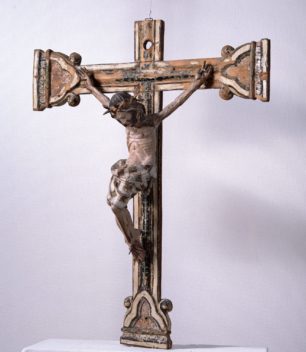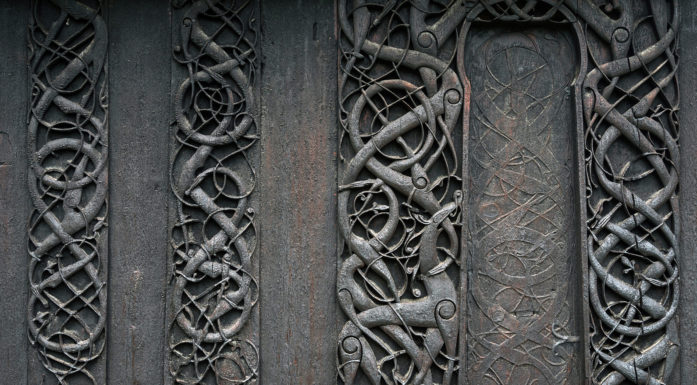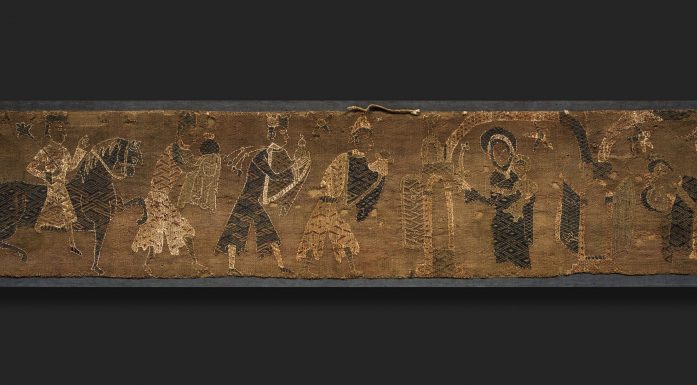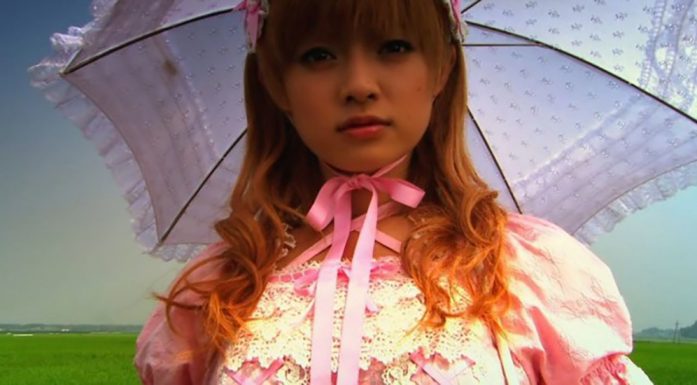From royal crown to a crown of thorns
Church art from the Middle Ages reflects the dramatic societal changes that were underway during this period. Artists changed the way they depicted Christ from a regal figure with a crown of gold to a suffering Christ with a crown of thorns.
Art historian Margrethe C. Stang can be found in the NTNU University Museum’s collection of church art, where she is surrounded by colourful medieval sculptures. She looks up at a crucifix from the 14th century and meets the gaze of a suffering Christ hanging on the cross. The crucifix originally hung in Hov church in Trøndelag county.
“This is one of the finest pieces we have in the collection. It is very vibrant and is the most lifelike sculpture we have,” she says.
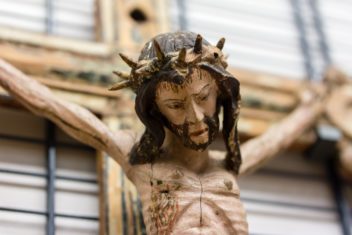
The Christ sculpture from Hov Church is one of the treasures of NTNU’s church art collection. Photo: Julie Gloppe Solem / NTNU
The Christ figure is masterfully sculpted. One of the most remarkable features is its three-dimensionality.
Masterfully crafted
The sculpture “is designed to be viewed from below, and therefore the craftsmen adjusted elements of the anatomy in such a way that the proportions look correct from that angle,” Stang says.
The ribs were painstakingly chiselled out of the wood. You can also see tendons, bone structure, toes and fingers. Skilled artisans undoubtedly were at work here, and they most likely lived in Trondheim.
“The archdiocese in Nidaros was an important employer for visual artwork and other ornamental works, and there must have been a lot of skilled craftsmen in medieval Trondheim,” she says.
Stang is an associate professor in NTNU’s Department of Art and Media Studies.
- You may also like: How forgetting about Middle Age treasures saved them
Big nails and a lot of suffering
Christ’s head is bowed forward in such a way that that when churchgoers looked up at the crucifix, they met the gaze of a dying Christ. The nails through his hands and feet are disproportionately large, as are the thorns in the crown.
“In the 1300s, suffering becomes more and more prominent in church art. This shift is related to a change in European religiosity during this period, with more focus on humility and empathy. The story of Jesus’ suffering becomes more important, and the triumphant aspect is toned down. No doubt the arrival of the Black Death in the mid-1300s reinforced this tendency, but we can already see clear signs of the focus on suffering in the 1200s,” says Stang.
In earlier centuries, Christ was depicted as triumphant and regal, wearing a crown on his head. In the 1300s, suffering replaced triumph, and a crown of thorns replaced the royal crown. The Three Kings were replaced by the shepherds out in the field.
- You may also like: Cheerful Madonna with a lot of bling
The essence of Christianity
Depicting blood running down the face of Christ also begins during this period. Until then, the face is portrayed as clean and holy. In the Hov sculpture, blood flows into Christ’s face from the crown of thorns and from the wounds in his side.
“And as a grotesque contrast to the suffering, the loin cloth is richly and beautifully decorated with patterns in gold, black and red. This richly ornate cloth symbolizes his high status,” says Stang.
The cross is decorated with vines that symbolize the tree of life. The crucifixion thus embodies suffering, death and resurrection. In this way, the crucifix makes visible the very essence of Christianity.
